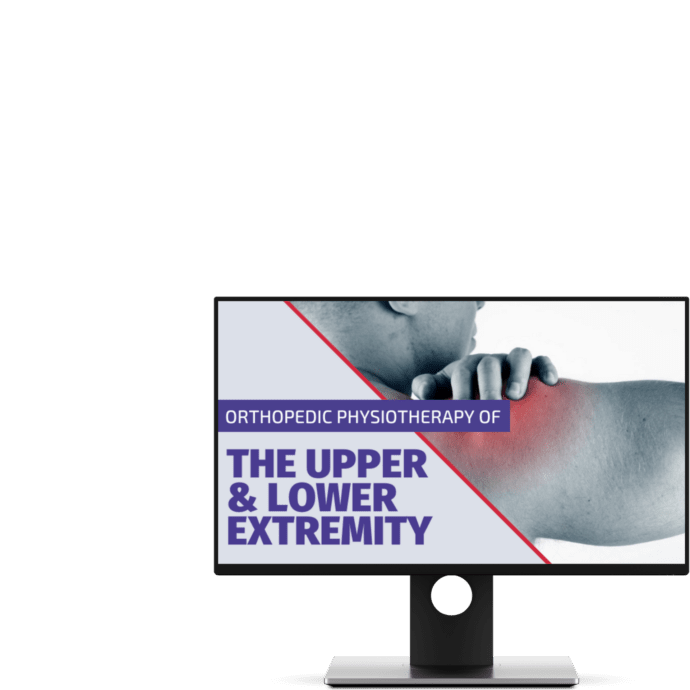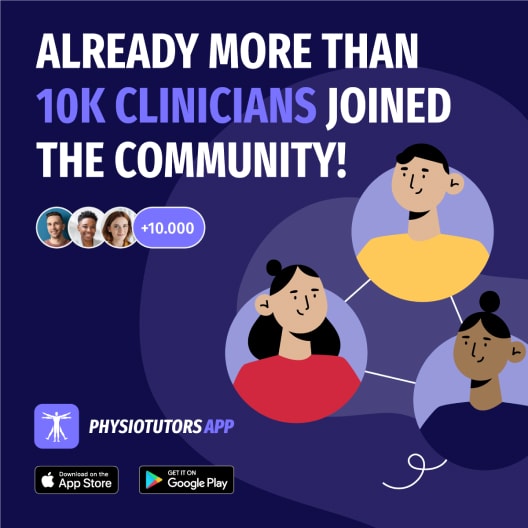Elbow Assessment


Elbow Assessment

The elbow joint consists of three different bones enclosed in a single capsule: the humerus, the ulna, and the radius.
The humeroulnar joint is a simple hinge joint, which only allows flexion and extension between the trochlea notch of the ulna and the trochlea of the humerus.
The humeroradial joint is a ball-and-socket joint with the concave socket on the radius and the convex side on the capitulum of the humerus.
At last, the proximal radioulnar joint is a pivot joint that enables rotation of the forearm, called pronation and supination.
Epidemiology
The point prevalence of elbow pain in the general (Dutch) population is 7.5%. The authors also report a 12-months prevalence of 11.2% with chronic pain in 5.3% of cases. Throughout the age groups, the prevalence of elbow pain increases gradually until it peaks in the age group between 45-64 years of age after which it drops only slightly. Regarding sexes, women have a slightly higher prevalence throughout all age groups compared to men (8.7% vs. 6.2%) (Picavet et al. 2003).
Course
Bot et al. (2005) conducted a prospective cohort study in 181 patients with elbow complaints in general practice. They found the following outcomes:
Elbow pain has an unfavorable prognosis with only 13% reporting full recovery at 3 months follow-up and a low 34% after 12 months.
At the same time, 90% of patients reported at least some improvement after 1 year follow-up.
The average baseline pain score of 5.3 (±2.1) decreased by 1.3 (±2.3) points at 3 months and 2.1 (±2.6) points at 12 months. At the same time, baseline disability with a score of 34.6 (±20.4) decreased by 6.3 (±16.2) points at 3 months and by 11.9 (±21.2) points after 1 year.
The 1-year recurrence was as high as 54%.
Prognostic factors
In the prospective cohort study of Bot et al. (2005) the following factors were associated with a negative prognosis for recovery (pain and disability) at 3 and 12 months follow-up:
– Longer duration of complaints before consulting the GP
– Having additional musculoskeletal comorbidity
– Usage of the coping strategy ‘retreating’
– Less social support (at 3 months only)
– History of elbow complaints (at 12 months only)
– ‘Worrying’ as a coping style (at 12 months only)
Red flags
Fractures
Radial head fracture or fracture of the olecranon after trauma resulting in constant pain at rest/night, pain at palpation, axial loading, vibration
You can use the elbow extension test to screen for elbow fractures:
Dislocation
Fall on the outstretched hand, trauma, deformity (appears elongated or shortened) (Waymack et al. 2018)
Osteochondritis dissecans/loose bodies
Repetitive trauma, crepitation, locking, decrease in active and passive range of motion (van Sonhoven et al. 2009, Ligon et al. 2014)
Distal biceps tendon ruptures
Prolonged (cortico)steroid use, activities like weightlifting and bodybuilding, trauma with audible and painful pop, swelling and ecchymosis, weakness in flexion, supination (Thomas et al. 2017)
A test you can use for the assessment of distal biceps tendon ruptures is the Hook test:
Distal triceps tendon ruptures
Prolonged (cortico)steroid use, activities like weightlifting and bodybuilding, trauma with audible and painful pop, swelling and ecchymosis, inability to actively extend the elbow (Thomas et al. 2017)
Tract anamnesis:
Referred pain from the organ systems usually refers to more proximal locations like the trunk, hip, or shoulder. For this reason, there is no tract, which has to be considered as a possibility to display as elbow pain.
Apart from red flags that warrant (urgent) referral to a specialist or GP, other sources of pain referral have to be considered.
Mainly radicular pain from the cervical spine should be excluded during the anamnesis and physical examination.
Basic Assessment
After visual assessment of the elbow including palpation, you should assess active range of motion in the affected and unaffected elbow.
Watch the following video to learn which movements should be assessed and look for pain during motion, restricted range of motion as well as compensation.
In order to be able to judge a limited range of motion, the affected elbow should be compared to the unaffected side. On top of that, compare the observed ROM to the standard values in different directions. These are:

AROM assessment is then typically followed by Passive Range of Motion Assessment (PROM) which you can watch with a click on the following video:
During PROM assessment, it’s important to compare the range of motion as well as the end-feel of the affected elbow with the unaffected side.
Another part of the basic assessment is functional assessment. You should ask your patient to perform the activities that he is having problems with daily living.
This way, you might be able to observe for awkward movement, pain during movement, and compensating strategies similar to AROM assessment.
As the last step resisted isometric testing can be useful in order to stress the muscles that cross the elbow joint including the respective tendons.
The following video shows you how to perform isometric testing:
In the following learning units, we will further specify which underlying pathologies can present in the elbow joint and how to assess them.
Specific Pathologies in the Elbow
There are several pathologies that are commonly seen in the elbow area. For more information, click on the respective pathology (content will be added in the near future):
- Posterolateral Rotatory Instability (PLRI)
- Collateral Ligament Injury
- Epicondylalgia (Tennis and Golfer’s Elbow)
- Proximal Biceps Tendon Ruptures
- Distal Biceps Tendon Ruptures
- Ulnar Nerve Entrapment
References
Ligon CB, Gelber AC. Elbow loose bodies. The Journal of rheumatology. 2014 Jul 1;41(7):1426-7.
Thomas JR, Lawton JN. Biceps and triceps ruptures in athletes. Hand clinics. 2017 Feb 1;33(1):35-46.
Follow a course
- Learn from wherever, whenever, and at your own pace
- Interactive online courses from an award-winning team
- CEU/CPD accreditation in the Netherlands, Belgium, US & UK
How to Boost Your Knowledge about the 23 Most Common Orthopedic Pathologies in Just 40 Hours


What customers have to say about this online course
- Eric Concannon07/04/24Orthopedic Physiotherapy of the Spine GREAT COURSE
Great course and relevant brings all the knowledge that I attained previously up to date in a practical and methodical way.
Great job guys !!!Dominik Meier01/04/24Orthopedic Physiotherapy of the Spine ANOTHER GREAT COURSE! COMPACT AND CLINICALLY RELEVANT!
After I had learned a lot during the course Orthopedic Physiotherapy of the Upper and Lower Extremities, I completed this great compact course. It is clinically relevant, extremely well-researched and carefully structured. I can also recommend it! I like the theory and especially the cases. Thank you!James Harvood28/03/24Orthopedic Physiotherapy of the Spine A GREAT COURSE
Very organized, very detailed. Learned a lot.
No negative things to report.
Highly recommend for all therapists, regardless of experience.
Jim Harwood, PT
NYC - Fokke Baarssen13/03/24Orthopedic Physiotherapy of the Upper and Lower Extremities ERGE GOEDE BRUIKBARE CURSUS
Zeker aan te raden. De meest voorkomende pathologiën komen aan bod . opbouw cursus is goed. Zeer overzichtelijk. Zeer gebruiksvriendelijk menu. Zeer goede bruikbare info welke je in de praktijk goed kan gebruiken. Top trouwens dat je altijd de cursus kunt nalezen indien nodigThijs de Jager10/03/24Orthopedic Physiotherapy of the Upper and Lower Extremities GOOD EVIDENCE BASED COURSE!
I would recommend people taking this course if they want to have a good understanding of the current evidence of upper and lower extremity conditions treated by physical therapy.Dominik Meier08/03/24Orthopedic Physiotherapy of the Upper and Lower Extremities GREAT COURSE! COMPACT AND CLINICALLY RELEVANT!
This course is compact, clinically relevant, extremely well-researched and carefully structured. I can really recommend it! I like the theory and especially the cases. Thank you! - Bas Polman07/02/24Orthopedic Physiotherapy of the Upper and Lower Extremities ECHT WAUW, PHYSIOTUTORS IS VOOR MIJ EEN GEWELDIGE ONTDEKKING
De cursus is geweldig.
– een goede methodische opbouw voor het leren
– duidelijke toelichting
– video’s
– quizen om je te testen, maar niet te lang en tussentijds
– literatuur
Gewoon ideaal! Voor opfrissen, voor nieuwe dingen leren en gewoon goed.Amy van Ast26/01/24Orthopedic Physiotherapy of the Spine UIGEBREIDDE EN ZEER LEERZAME CURSUS
Erg tevreden over de inhoud van de cursus. Erg leerzame cursus, die ik zeker op latere momenten nog eens zal raadplegen voor opfrissen van informatie. De video’s zijn op een rustige manier opgezet, waardoor het makkelijk te volgen is. (Het aantal accreditatiepunten voor de prijs is ook erg goed. Bij vragen of het aanvragen van accreditatiepunten krijg je zeer snel respons (accreditatepunten binnen 1 dag bijgeschreven).
Een heel klein kritiekpuntje is omtrent de vertaling van het engels naar het nederlands (vooral in de toetsen). Deze klopt niet altijd, waardoor je even moet nadenken wat ze bedoelen (echter ben ik erg slecht in Engels, dus kan mij voorstellen dat niet iedereen daar last van heeft).Christopher Legler25/01/24Orthopedic Physiotherapy of the Upper and Lower Extremities EXCELLENT COURSE
Very pleased. It was thorough and well worth it! - Mathias Smits29/12/23Orthopedic Physiotherapy of the Spine ZEER INTERESSANTE, UITGEBREIDE CURSUS OMTRENT GEHELE WERVELKOLOM
Super gestructureerde, interessante cursus.
Waarbij je een mooi overzicht krijgt over meest voorkomende pathologieën van de rug.
Voordeel is dat je de cursus kan blijven raadplegen doorheen de tijd.
Zeker een aanrader voor kinesisten die veel werken met MSK-populatie!Maria Gerlich01/12/23Orthopedic Physiotherapy of the Spine EXCELLENT COURSE HIGHLY RECOMMENDED
Excellent course: well organized, clearly presented, thorough and clinically relevant.Yara Tuïnk29/11/23Orthopedic Physiotherapy of the Upper and Lower Extremities FIJNE CURSUS
Ik heb deze cursus een half jaar na afstuderen gedaan. Ik vond het een fijne cursus om mijn kennis weer op te frissen en me verder te verdiepen in bepaalde aandoeningen. - Lorcan Hormigo Torres04/09/23Orthopedic Physiotherapy of the Upper and Lower Extremities EXCELLENT COURSE
High quality course, with practical information that can immediately be applied, based on scientific literature up to date. Excellent to summarize the fundamentals of assessment.Josh Hermans23/07/23Orthopedic Physiotherapy of the Upper and Lower Extremities SUPERB COURSE
This course was everything I expected and more! Logical structure, enough depth and clinical reasoning is challenged.Lucinda de Vries20/02/23Orthopedic Physiotherapy of the Upper and Lower Extremities ORTHOPEDIC PHYSIOTHERAPY OF THE UPPER AND LOWER EXTREMITIES
Super interessante en leuke cursus. Ook zeker voor afgestudeerde fysiotherapeuten om hun kennis weer op te halen/bij te spijkeren. Ondanks dat ik al 5 jaar werkzaam ben als fysiotherapeut was deze cursus zeker een uitdaging en op veel punten echt heel moeilijk en leerzaam.
Het enige vervelende (waar weinig aan gedaan kan worden). de vertalingen eng-nl zijn soms heel onduidelijk.
Al met al zeer genoten tijdens het volgen van deze cursus en er zullen er zeker meerdere volgen. - Aurelio Basile09/12/22Orthopedic Physiotherapy of the Upper and Lower Extremities ORTHOPEDIC PHYSIOTERAPY OF THE UPPER AND LOWER EXTREMITIES
Great course! It allows you to make objective assessments with order and clarity. As a result, it is possible to set up effective and efficient treatments.
I also found the sections on the epidemiology and course of the diseases very useful, in order to educate patients and obtain greater compliance with the treatment. Super recommended!!Aurelio Basile09/12/22Orthopedic Physiotherapy of the Spine ORTHOPEDIC PHYSIOTERAPY OF THE SPINE
Fantastic course! simple to follow and extremely helpful in assessing and treating spinal related issues. Furthermore, it is possible to immediately apply the knowledge acquired in the clinic. A must for us physiotherapists.DUNCAN10/01/21Orthopedic Physiotherapy of the Upper and Lower Extremities GREAT COURSE
Great course, lots of information, the instruction videos are really helpful. - DOUWE WILLAERT28/12/20Orthopedic Physiotherapy of the Upper and Lower Extremities i would recommend this course to everyone.
if i may give one suggestion that is maybe hard to implement. but i sometimes struggle with explaining things in patient language. so maybe add some frequent asked questions / mechanisms from patients and how to explain it simple or with a metaphore ?
Thanks again for all your work putted in to this course <3JEROEN VAN ZANTEN20/10/20Orthopedic Physiotherapy of the Upper and Lower Extremities I LOVE IT
This course really helps the starting physio. It gives you more convidence. The first year out of school i was really not convident and after this ( relative cheap) course, it got better! Thanks a lot physiotutors! I also got motivation to start studying manual therapy, as i know now, that there is way more to learn.WOUTER13/09/20Orthopedic Physiotherapy of the Upper and Lower Extremities FUN AND EASY TO IMPLEMENT IN THE CLINICAL PRACTISE
Took my time to learn and enjoy form this course!
Would definitely recommend this to other physiotherapist who work in the first-line care. - ANTONIUS SMOOK22/08/20Orthopedic Physiotherapy of the Upper and Lower Extremities GREAT COURSE
They go, from the basic assessment to the lower and upper limb, step by step with scientific reasoning. It’s a very usefull course to improve your clinical reasoning in practice.JASMIN KONJIC07/07/20Orthopedic Physiotherapy of the Upper and Lower Extremities REALLY REALLY GREAT!
Everything is extremely well-researched and carefully structured! My only complaint, or actually just a hope for their future courses is that more things should to be structured as bullet points. It can sometimes hard to remember facts from a big block of text. Other than that, amazing. Thanks for your great work guys, it’s been a big help!AVIV27/05/20Orthopedic Physiotherapy of the Upper and Lower Extremities Great course, very nice and clean, full attention to details, great job boys!
Cheers,
Aviv - Thomas20/03/20Orthopedic Physiotherapy of the Upper and Lower Extremities STARKES KONZEPT!
Starkes Konzept wissenschaftlich untermauert für die Haupt-Diagnosen der Extremitäten. Sehr übersichtliches Design. Gute Möglichkeit das Lernen einzuteilen. Fortbildung der Zukunft. Nur zu empfehlen. Freue mich auf die nächsten Kurse!Marc07/01/20Orthopedic Physiotherapy of the Upper and Lower Extremities LEERZAAM
Goede opbouw en uitleg per onderdeel.JUDITH06/01/20Orthopedic Physiotherapy of the Upper and Lower Extremities My compliments for this online course! I’m feeling all up to date now! I can see why it is highly accredited with the KNGF. Other than expected I quite enjoyed taking the course! Good structure ,good balance between text en videos and content en quiz. For me the assessment assignments worked great to lock the knowledge in! Quizzes are sufficiantly challenging and force/ motivate to really study the contents, think about it and listen to the questions carefully!
Great video footage of tests and exercises! Great links to articles! All very useful for dailey practice (even in osteopathy ;)) and immediately applicable! Should contribute to communication with other health care specialists e.g. when it comes to clinical reasoning for requesting further medical examination e.g. immaging. I already recommended the course to several colleagues!
One point of attention: I got the feeling that the short quizzes at the end of each unit didn’t always mach the unit’s content or plainly state differently (e.g. Type of SLAP lesions). - AARON03/01/20Orthopedic Physiotherapy of the Upper and Lower Extremities PERFECT INFORMATION
Much of it was fresh rehearsal including some new insights! Would recommend.DIMITRY22/12/19Orthopedic Physiotherapy of the Upper and Lower Extremities THE FUTURE OF PHYSIOTHERAPY
I think this course should be done by all physiotherapists! The evidence based principle should be adopted by every physiotherapist, this course is a great way to learn how to apply tests, but also background information, advice for patients and some rehabilitation. I believe this kind of course is the future of physiotherapy and is very suitable for everyone.Marijke13/12/19Orthopedic Physiotherapy of the Upper and Lower Extremities BEDANKT!
Uitstekende manier van leren.











